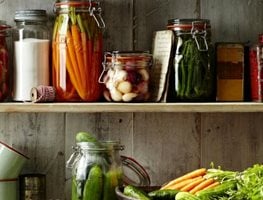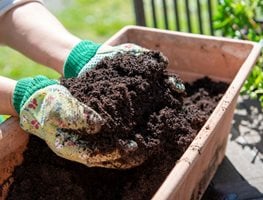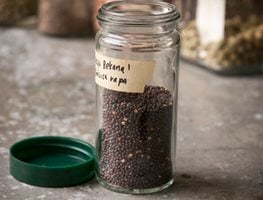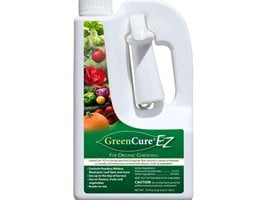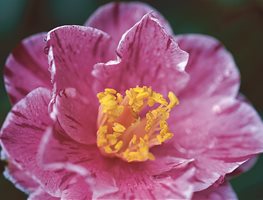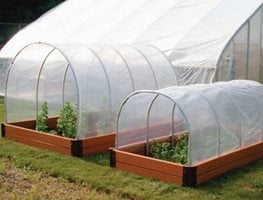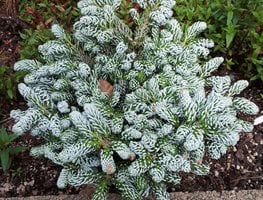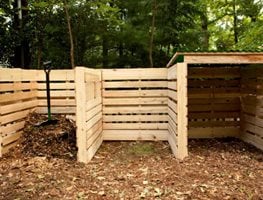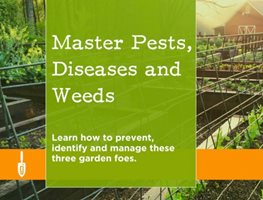10 Gardening Activities for September in the South
Here are a few garden reminders, tips, inspiring ideas, and maintenance suggestions for your garden this month.
1. Continue Harvesting & Storing Produce
If you’re growing tomatoes, herbs, zucchini, green beans, or any other common vegetables and fruits, you probably have an abundance of fresh produce. Continue harvesting while produce is ripe and when flavor is at its peak. This is the last month you’ll be harvesting lots of summer produce—by the end of September, you’ll likely be pulling plants out and replanting. Make sure to use what you can while it’s fresh, share some with friends or neighbors, and preserve the rest. There are a number of ways to preserve produce—from pickling to canning to freezing. Tomatoes are usually the most abundant crops. Here are some ways blogger Kevin Lee Jacobs uses fresh tomatoes and stores the rest. Ball provides good information if you're interested in learning more about canning. Williams Sonoma has some quick-tips for pickling produce. If you want to freeze your produce, take a look at this simple guide to freezing fruits and vegetables.
2. Replenish Soil without Tilling
As summer crops fade and you start pulling out plants and preparing to plant a cool season garden, consider adding compost using the no-till method. (If you’ve already started your cool-season crops in August, then top dress beds this month.) The no-till method is typically easier than tilling because it doesn’t require machinery and it’s less destructive to the soil. Joe Lamp’l, of Joe Gardener, explains the no-till method in this video and Charles Dowding shows how to start new garden beds with the no-till technique.
3. Save Seeds
If you’re planning on saving seeds, let some summer perennials and edible crops go to seed. Avoid deadheading, cutting back, or pinching plants that you’re going to save seeds from. Seed Savers Exchange is a good resource to buy seeds or learn about seed saving, and the Royal Horticultural Society has a good introductory video on seed saving.
4. Spray for Powdery Mildew
Powdery mildew can be a real problem in the south especially when weather is hot and dry. This plant fungus appears as white or light grey powdery spots and causes leaves to turn yellow and drop. Solutions include everything from planting mildew-resistant varieties to using home remedies or off-the-shelf treatments such as Dr. Earth Natural and Organic fungicide. If the fungus is already present in your garden, it also helps to disinfect garden tools after each use (especially pruners) with rubbing alcohol. If powdery mildew appears, remove infected branches and dispose of them. It’s particularly important to watch roses, clematis, lilacs, and garden phlox. Learn more about how to prevent and treat powdery mildew in your garden.
5. Plant Now
Providing year-round interest, crape myrtles are very resilient, love the sun, and are extremely heat tolerant. When planting, dig a hole twice as wide and just as deep as the container. Stake if needed and water thoroughly after planting.
Plant shrub roses in a sunny to lightly shaded site with fertile, well-draining soil that stays evenly moist for best results. You can also plant in a container, make sure the pot is at least 15 to 20 inches in diameter and 18 to 24 inches deep, with adequate drainage.
In addition to filtered shade and good drainage, plant rhododendrons and azaleas in a spot with protection from the wind. Water thoroughly before planting and position the crown of the root ball a few inches higher than the surrounding soil.
Don't miss what to do in the garden each month, make sure you're getting our weekly newsletter.
6. Continue Watering Plants
September can be a dry month for much of the south. Be sure to continue watering trees, shrubs, and later-season perennials such as asters, black-eyed Susans, echinacea, bee balm, and ornamental grasses. Regularly watering this month will keep plants healthy through the fall. If you want to automate your irrigation system, you can hook your controller up to a rain sensor or replace your old controller with a modern smart controller. With a smart controller, you can adjust watering manually from an app, or you can program it to adjust based on local weather data.
7. Build or Buy a Cold Frame
Cold frames can help extend the growing season into fall and even through winter. You can build or buy a standalone cold frame, or you can build or buy one to cover your existing raised beds. View this article on building a DIY cold frame or look into buying a pre-made cold frame from Gardener's Supply Company or Amazon.
8. Refresh Containers
By the end of summer, container gardens usually need a refresh. For fall containers, consider plants with vibrant colors that will look great with pumpkins and gourds set around them in October. Try plants such as black-eyed Susans, chrysanthemums, ornamental kale and cabbage, ornamental grasses, heuchera, hostas, sweet potato vines, dahlias, asters, and sedum. It also helps the container design to add some structure or height by planting evergreen conifers. Stick to dwarf or intermediate conifers that will stay under 10 feet tall in 10 years. Buy conifers online at Singing Tree Gardens. Proven Winners has some great tips on special considerations for fall containers.
9. Build or Buy a Compost Bin
Composting isn’t just about reducing waste. When done properly, it really does help produce better soil for growing plants. There are many options for compost bins, but there are a few key criteria that will help you narrow it down. One, make sure your compost bin gets decent air circulation. Air vents on plastic compost bins work well, as do wood bins with gaps between boards (watch this video on building a wood compost bin). Two, you generally want a cover to control the amount of moisture in the compost heap. If too much rain gets on the compost, it will get too wet and start to smell. Three, make sure you know what to put into your compost bin. A properly balanced compost heap should not stink. Garden expert Charles Dowding gives more tips in his video on what to put in your compost bin. Remember, you should never put meat or animal bones in the compost heap. You only want to put green waste such as vegetable and fruit scraps, coffee grounds, ash, leaves, lawn clippings, and other yard waste that will break down quickly (avoid large twigs or branches). If you have large twigs or branches, run them through a shredder before adding them to the compost pile.
10. Online Learning
Go back to “garden school” this fall with online gardening courses taught by talented experts in their respective fields. One of the instructors is Joe Lamp’l (you may know him as Joe Gardener), and in his two courses, he shares insights on seed starting and pests, diseases, and weeds. Other courses include edible gardening, deer-resistant design, container gardening, houseplants, perennial plants, and more.
If you enjoyed this information, sign up for our weekly newsletter. Each week, you'll get Garden Design's best delivered right to your inbox including design tips, plant picks, great gardens, outdoor living products, and events to enjoy — along with monthly gardening checklists just for your area.
Do you know someone who would enjoy this South Region gardening information? Why not share it with them?
When you purchase products through links on our site, we may receive an affiliate commission. Thank you for your support.
